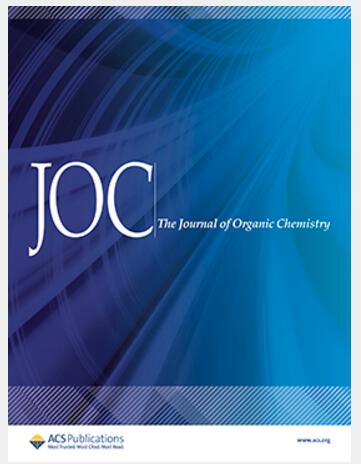电化学位点选择性羰基还原对施主-受体环丙烷和环丁烷的释放氢化反应
IF 3.3
2区 化学
Q1 CHEMISTRY, ORGANIC
引用次数: 0
摘要
建立了一种在室温常压下应变环(环丙烷和环丁烷)加氢的无酸或无氢电化学方案。机理研究表明,反应是由羰基的还原引起的。该方法是高度具体的应变环,如环丙烷和环丁烷,其表现出广泛的官能团耐受性。本文章由计算机程序翻译,如有差异,请以英文原文为准。

Strain-Releasing Hydrogenation of Donor–Acceptor Cyclopropanes and Cyclobutanes via Electrochemical Site Selective Carbonyl Reduction
An acid or hydrogen gas-free electrochemical protocol is established for the hydrogenation of strained rings (cyclopropane and cyclobutane) at room temperature and atmospheric pressure. The mechanistic study revealed that the reaction was initiated via the reduction of the carbonyl group. The methodology is highly specific toward strained rings such as cyclopropane and cyclobutane, which exhibit broad functional group tolerance.
求助全文
通过发布文献求助,成功后即可免费获取论文全文。
去求助
来源期刊

Journal of Organic Chemistry
化学-有机化学
CiteScore
6.20
自引率
11.10%
发文量
1467
审稿时长
2 months
期刊介绍:
Journal of Organic Chemistry welcomes original contributions of fundamental research in all branches of the theory and practice of organic chemistry. In selecting manuscripts for publication, the editors place emphasis on the quality and novelty of the work, as well as the breadth of interest to the organic chemistry community.
 求助内容:
求助内容: 应助结果提醒方式:
应助结果提醒方式:


